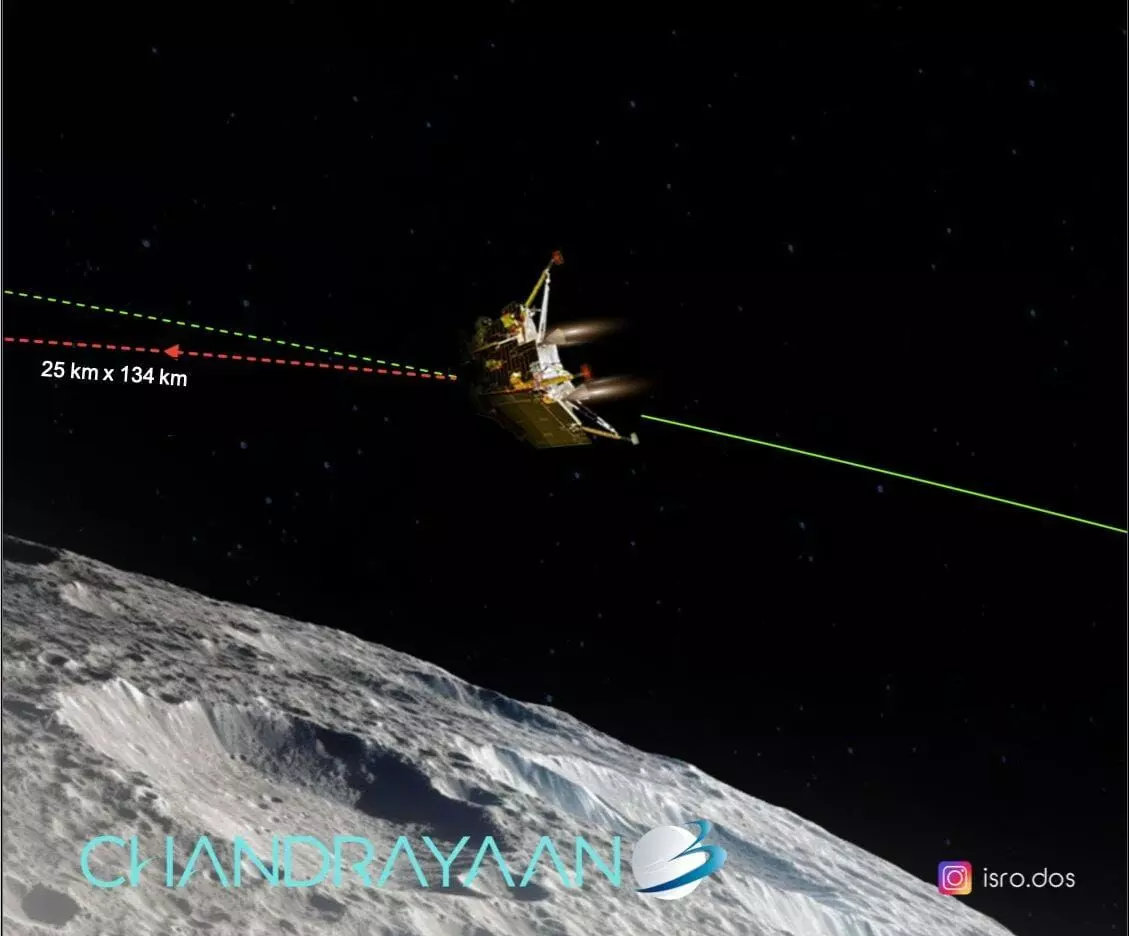Chandrayaan-3: All you want to know about India’s moon mission
The event will be broadcast live on ISRO's official website, isro.gov.in, and streamed on ISRO's YouTube channel and Facebook page
By Anoushka Caroline Williams
Hyderabad: The Indian Space Research Organisation (ISRO) has confirmed that the Chandrayaan-3 is proceeding as planned, igniting excitement for a potentially historic soft landing on the moon.
This announcement comes on a much-anticipated day, setting the stage for a significant milestone in space exploration.
ISRO's assurance regarding the Chandrayaan-3 timeline renews the spotlight on India's lunar missions. Chandrayaan-3 aims to build upon the knowledge and experience gained from previous missions including Chandrayaan-2, which, despite challenges, yielded valuable insights.
Both experts and enthusiasts are eagerly counting down to the anticipated historic soft landing, hoping to witness another remarkable achievement in India's space journey.
The prospect of a successful moon landing by Chandrayaan-3 heightens expectations, showcasing India's commitment to advancing space technology and deepening our understanding of the cosmos.
With this latest update from ISRO, the world's attention is firmly fixed on the horizon, as the space agency's determination and dedication once again capture global interest. If successful, India's upcoming lunar soft landing would undoubtedly etch a significant mark in the annals of space exploration, underscoring the nation's capabilities and aspirations in the celestial realm.
Here's what you need to know:
- Chandrayaan-3's lander, Vikram, is scheduled to execute a gentle moon landing on August 23 at 6:04 p.m.
- The greatest challenge for Chandrayaan-3 lies in slowing down from a horizontal speed of 1.68 km/s (6,048 km/hr), changing its orientation to vertical, and ultimately achieving a soft lunar landing.
- In 2019, India's previous attempt to land on the lunar south pole ended in failure.
- The event will be broadcast live on ISRO's official website, isro.gov.in, and streamed on ISRO's YouTube channel and Facebook page.
- ISRO's Chief, Somanath, expresses confidence that everything has proceeded smoothly without any surprises. Additional photos from the Lander Imager Camera 4 on Chandrayaan have also been released.
- The success of Chandrayaan-3 would represent a monumental historic accomplishment by Indian professionals and scientists, according to Jyotiraditya Scindia, Union Civil Aviation Minister.
- The final 15 minutes of the Chandrayaan-3 landing, dubbed the "15 minutes of terror," entail a crucial transition for the Vikram lander from high-speed horizontal movement to vertical descent. The success of this maneuver will determine the mission's outcome, echoing the sentiments of former ISRO chairman K Sivan.
- Enhancements and expansion of the landing area have been implemented, as per a former ISRO scientist, to ensure a safer and more successful operation.
Background
Three expeditions to the Moon in 15 years! ISRO appears to be beckoned by the Moon.
Scientists have discovered frozen water deposits in the darkest and coldest parts of the Moon's polar regions for the first time using data from the Chandrayaan-1 spacecraft in 2009. The spacecraft, launched in 2008, carried 11 scientific instruments from India, the USA, the UK, Germany, Sweden, and Bulgaria. After completing all major mission objectives, the orbit was raised to 200 km in May 2009. The orbiter mission, which had a mission life of two years, was prematurely aborted after communication with the spacecraft was lost on August 29, 2009.
A decade later, Chandrayaan-2, comprising an orbiter, lander, and rover, was successfully launched in 2019. The objectives of the second mission were scientific studies by payloads onboard the orbiter and technology demonstration of soft landing and roving on the lunar surface. Most of the components of the technology demonstration were successfully accomplished, but the lander with a rover in its belly crash-landed on the lunar surface in the final lap.
All eight scientific instruments of the orbiter, which had separated from the lander and rover, are performing as per design and providing valuable scientific data. The mission life of the orbiter increased to seven years due to the precise launch and orbital manoeuvres. Two-way communication between the Chandrayaan-2 orbiter and the Chandrayaan-3 lunar module has been established.
The discovery of water on the Moon in 2009 was a significant event, as scientists created the first map of water trapped in the uppermost layer of the Moon's soil. The study, published in the journal Science Advances, builds on the initial discovery of water and a related ion hydroxyl, which consists of one atom each of hydrogen and oxygen in lunar soil. NASA's Moon Mineralogy Mapper, which flew aboard the Chandrayaan-1 spacecraft in 2008, was used to quantify the amount of water present on a global scale.